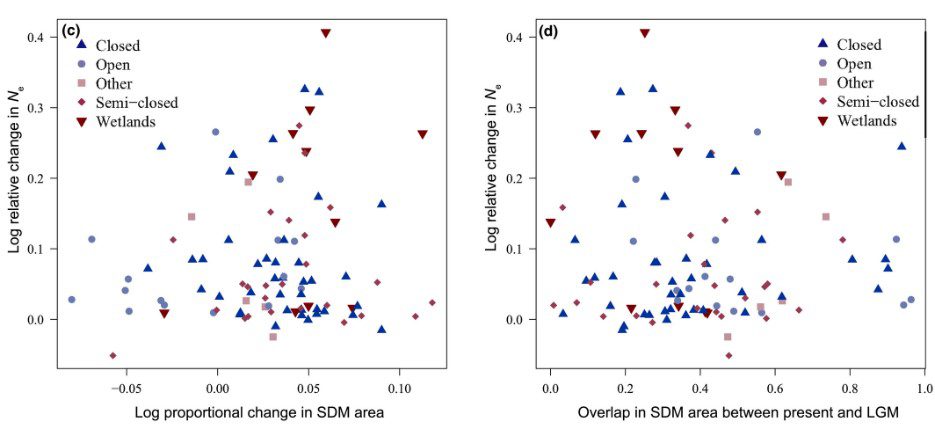Un nuovo articolo a cui ho lavorato è uscito su Molecular Ecology
Eleanor F. Miller, Rhys E. Green, Andrew Balmford, Pierpaolo Maisano Delser, Robert Beyer, Marius Somveille, Michela Leonardi, William Amos, Andrea Manica
Bayesian Skyline Plots disagree with range size changes based on Species Distribution Models for Holarctic birds
Molecular Ecology, Volume 30, Issue 16 August 2021 Pages 3993-4004

Abbiamo analizzato più di 100 specie di uccelli dell’emisfero Nord, scoprendo che la genetica e l’ecologia non concordano nel ricostruire come hanno reagito alle fluttuazioni climatiche del passato.
Perché è interessante? Le ricostruzioni messe a confronto nel nostro articolo (una basata su dati genetici, l’altra su modelli ecologici) sono normalmente utilizzate per valutare come le specie possono reagire all’attuale emergenza climatica.
Nel nostro studio, dimostriamo che quando confrontiamo questi due metodi in maniera sistematica per molte specie tendono a raccontarci storie abbastanza diverse. Ciò non significa che si sbagliano: metodi diversi si basano su presupposti diversi, ed è probabile che a ciascuno di essi manchi una parte piccola ma significativa dell’intera storia.
Quindi, quando usiamo questi metodi, la chiave è l’interdisciplinarietà: l’integrazione nelle analisi di diversi tipi di dati aiuta ad affrontare queste limitazioni e ottenere risultati più affidabili.
Articolo
Eleanor F. Miller, Rhys E. Green, Andrew Balmford, Pierpaolo Maisano Delser, Robert Beyer, Marius Somveille, Michela Leonardi, William Amos, Andrea Manica
Bayesian Skyline Plots disagree with range size changes based on Species Distribution Models for Holarctic birds
Molecular Ecology, Volume 30, Issue 16 August 2021 Pages 3993-4004 https://doi.org/10.1111/mec.16032
Abstract
During the Quaternary, large climate oscillations impacted the distribution and demography of species globally. Two approaches have played a major role in reconstructing changes through time: Bayesian Skyline Plots (BSPs), which reconstruct population fluctuations based on genetic data, and Species Distribution Models (SDMs), which allow us to back-cast the range occupied by a species based on its climatic preferences. In this paper, we contrast these two approaches by applying them to a large data set of 102 Holarctic bird species, for which both mitochondrial DNA sequences and distribution maps are available, to reconstruct their dynamics since the Last Glacial Maximum (LGM). Most species experienced an increase in effective population size (Ne, as estimated by BSPs) as well as an increase in geographical range (as reconstructed by SDMs) since the LGM; however, we found no correlation between the magnitude of changes in Ne and range size. The only clear signal we could detect was a later and greater increase in Ne for wetland birds compared to species that live in other habitats, a probable consequence of a delayed and more extensive increase in the extent of this habitat type after the LGM. The lack of correlation between SDM and BSP reconstructions could not be reconciled even when range shifts were considered. We suggest that this pattern might be linked to changes in population densities, which can be independent of range changes, and caution that interpreting either SDMs or BSPs independently is problematic and potentially misleading.
